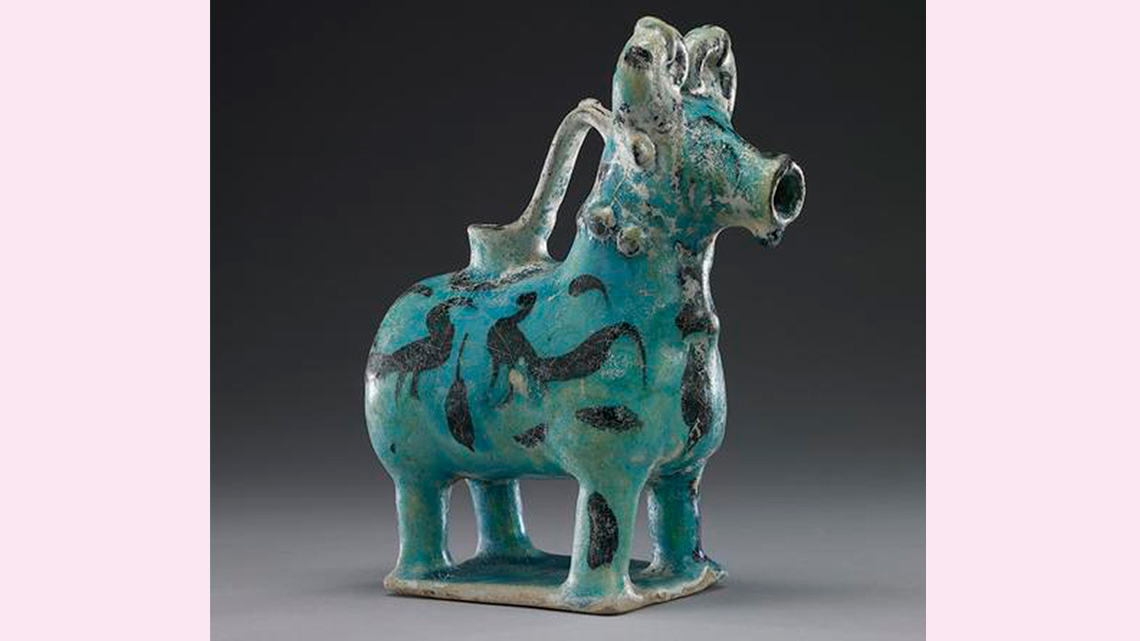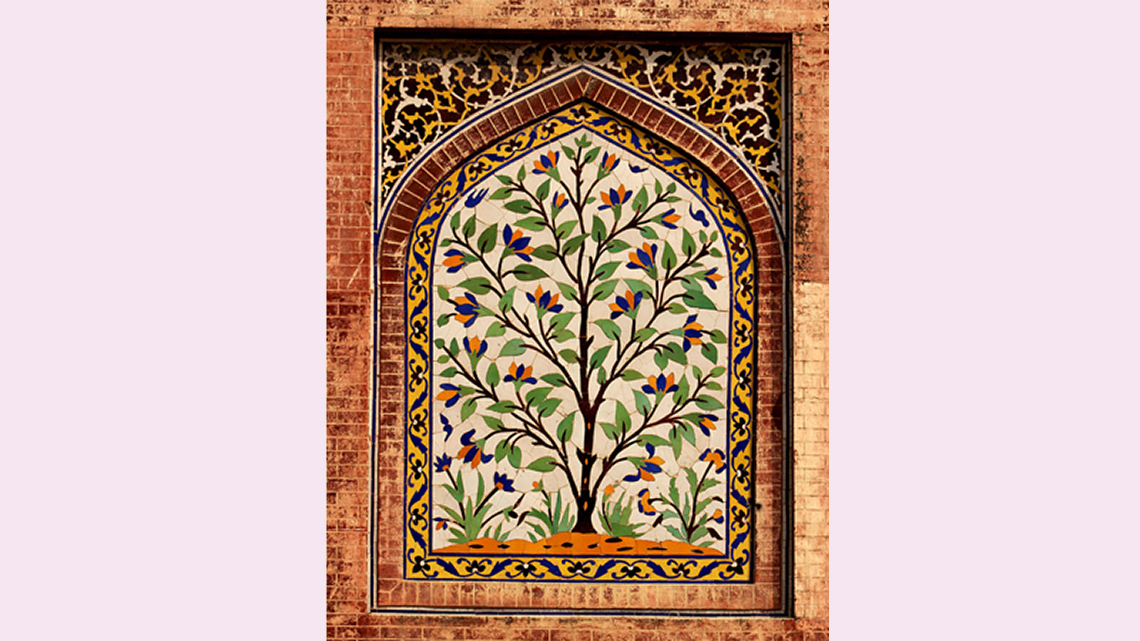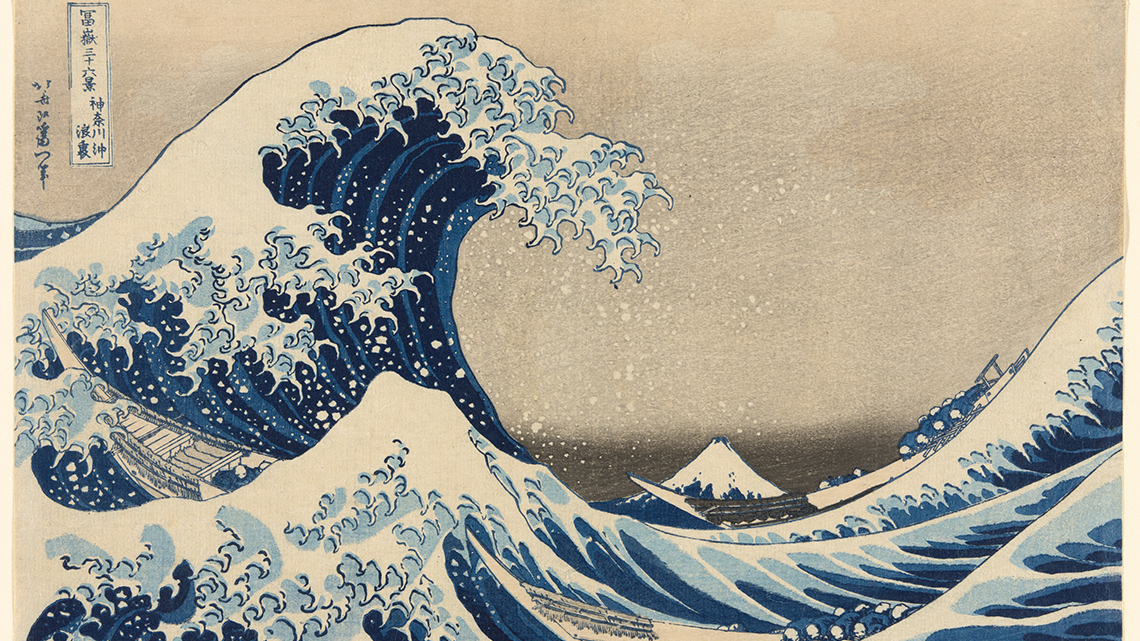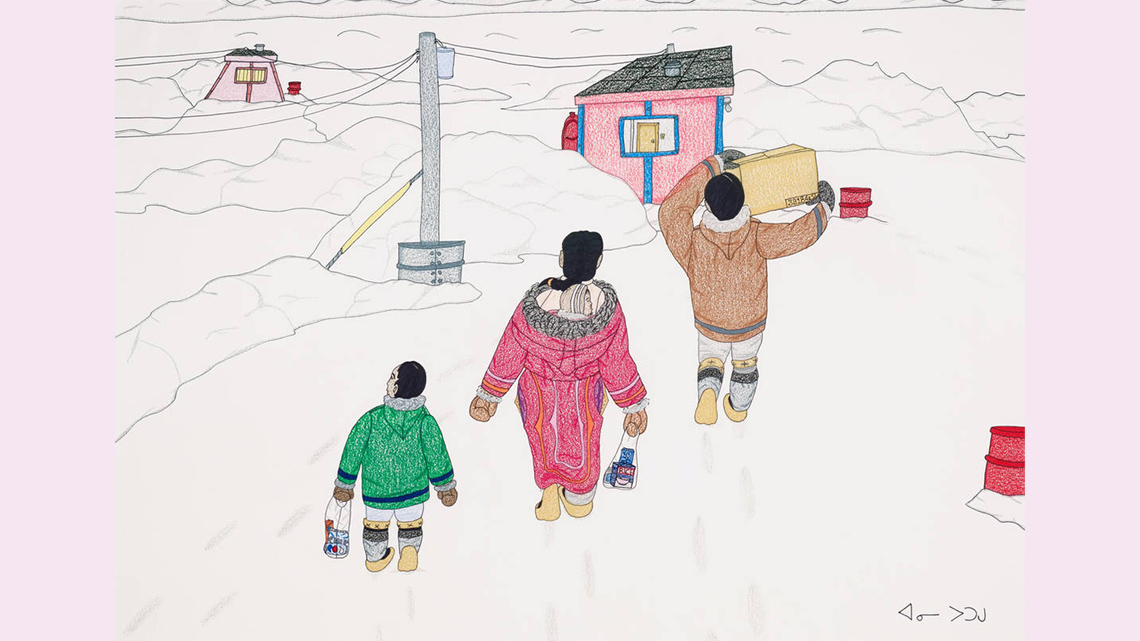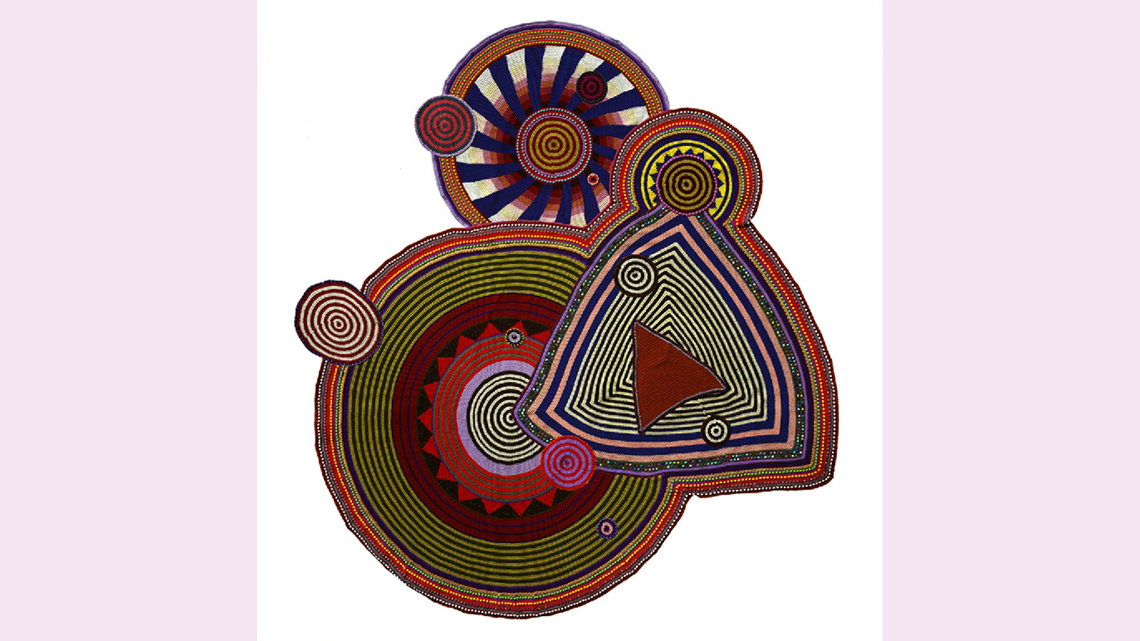Minds On
Let’s get started!
Notice and wonder
Explore the following carousel of artwork.
What do you notice?
What is similar and/or different about the types of artwork in the carousel?
Action
Get ready, get set…
Variety in art
Artists create their artwork in many diverse forms.

They can use:
- paint, pencil crayons and crayons
- paper, canvas or fabric
- clay and stone
- beads and thread or yarn
- digital applications
Art from the past
Let’s explore some art created by artists a long, long time ago.
Press the following tabs to access images and descriptions of art from the past.

Animal-shaped pitcher from Iran, 1100’s – early 1200’s
This clay pitcher was created by an artist in Iran hundreds of years ago!
What kind of animal does it remind you of?
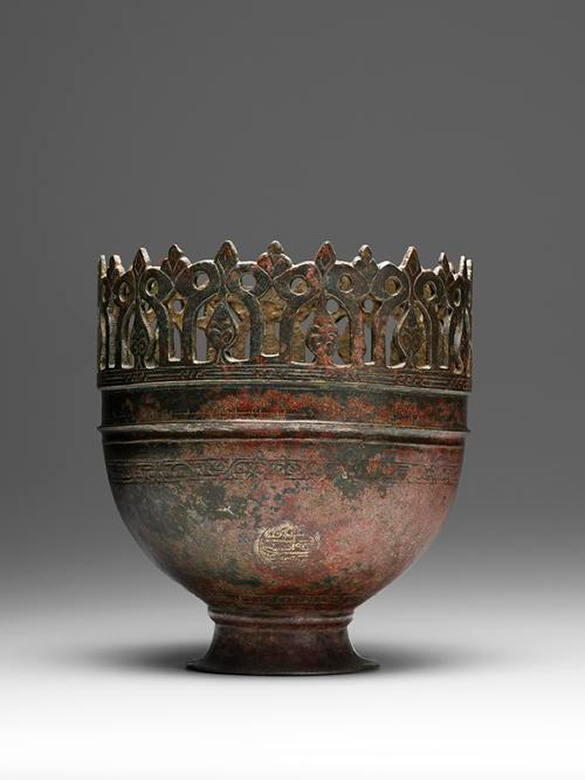
A bronze vase from southern Spain, 1100’s – early 1200’s
Bronze is a type of metal that lasts a long time.
The artist engraved details in the bowl and twisted the metal at the top to create special designs.
Engraving is when a design is scratched or carved into a material.
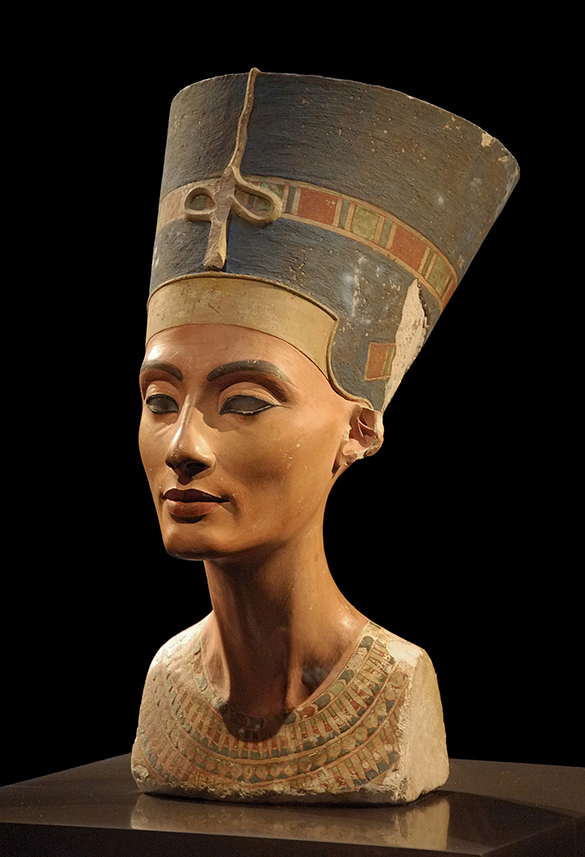
The Nefertiti Bust by Thutmose in Egypt, 1352-1332 BCE
DescriptionA sculpture of a historical person named Nefertiti. The sculpture is a portrait of her head and shoulders. The portrait is realistic. The portrait is wearing a tall crown with a painted pattern and a snake on it.
The artist Thutmose created a portrait of Queen Nefertiti during the time of the Egyptian empire.
They carved a portrait out of stone and then painted the details.

A clay pot made by Haudenosaunee in the United States, 1450-1500
This clay pot was created in the 1400s by an artist in the Haudenosaunee community. The Haudenosaunee community is also known as the Iroquois in the United States.
What do you notice about the shape of the pot and the pattern on the rim? The pattern on the rim is called a collar design.
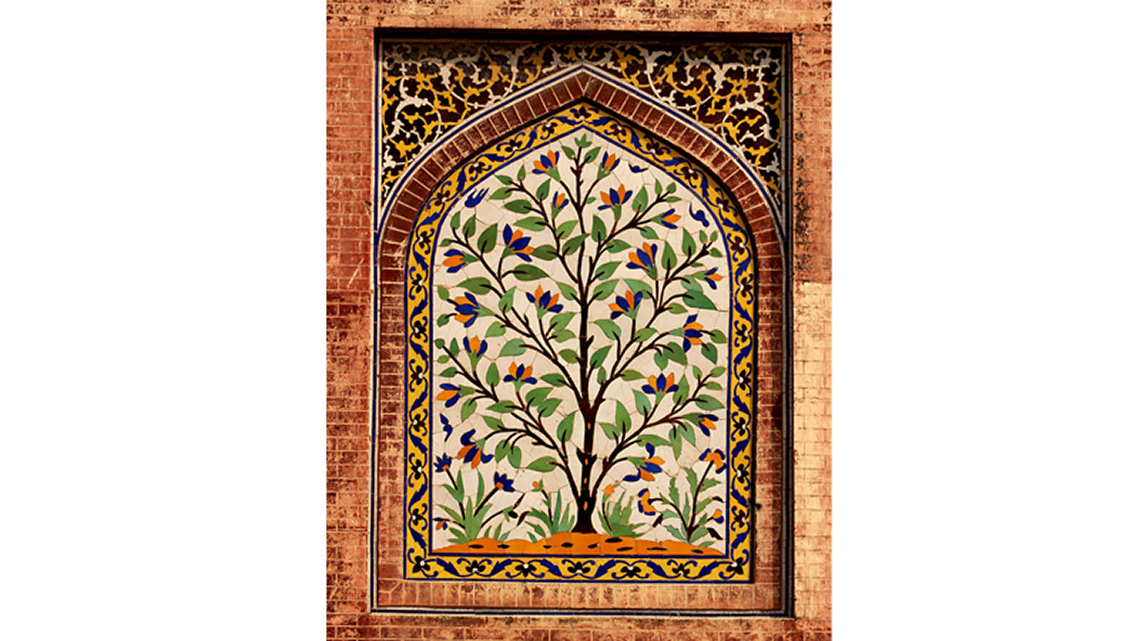
Fresco wall in Pakistan, built in the 1600’s
This type of painting is known as fresco. It is part of a building in Lahore, Pakistan.
The artist used paint right after the plaster wall was created, so we can still enjoy it even though it was made over 300 years ago!

The Great Wave print by Katsushika Hokusai, 1830 – 1832
This type of art is called a print. It was created around 1830.
Japanese artist, Kasushika Hokusai, used a method called ukiyo-e (Japanese wood block printing).
He carved details into a flat piece of wood, added paint and pressed the print onto paper.
This is one of a series of 36 prints that Katsushika Hokusai created about water and waves. A series is a related set of art pieces. The pieces have a related theme. They are made by the same artist.
Contemporary art
Let’s explore some more recent artwork.
Press the following tabs to access images and descriptions of art that have been made recently.
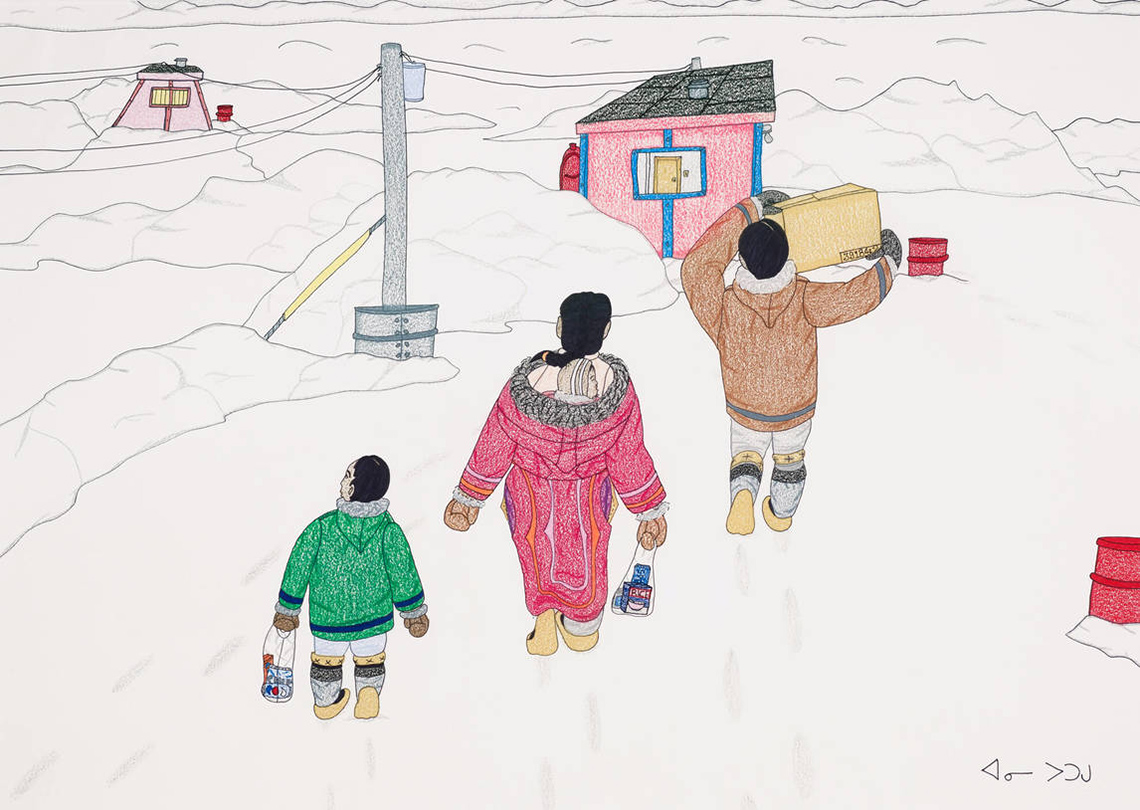
Family Taking Supplies Home drawing by Annie Pootoogook, 2006
A coloured pencil drawing displays three family members. Each family member is carrying supplies. They are walking home in the winter. They are warmly dressed for the winter. There is snow on every surface.
This is a drawing created by Inuk artist Annie Pootoogook. She was born in Kinngait, Nunavut.
Annie liked to draw about everyday things that happened in her community, her culture and in her home. What is happening in the drawing?
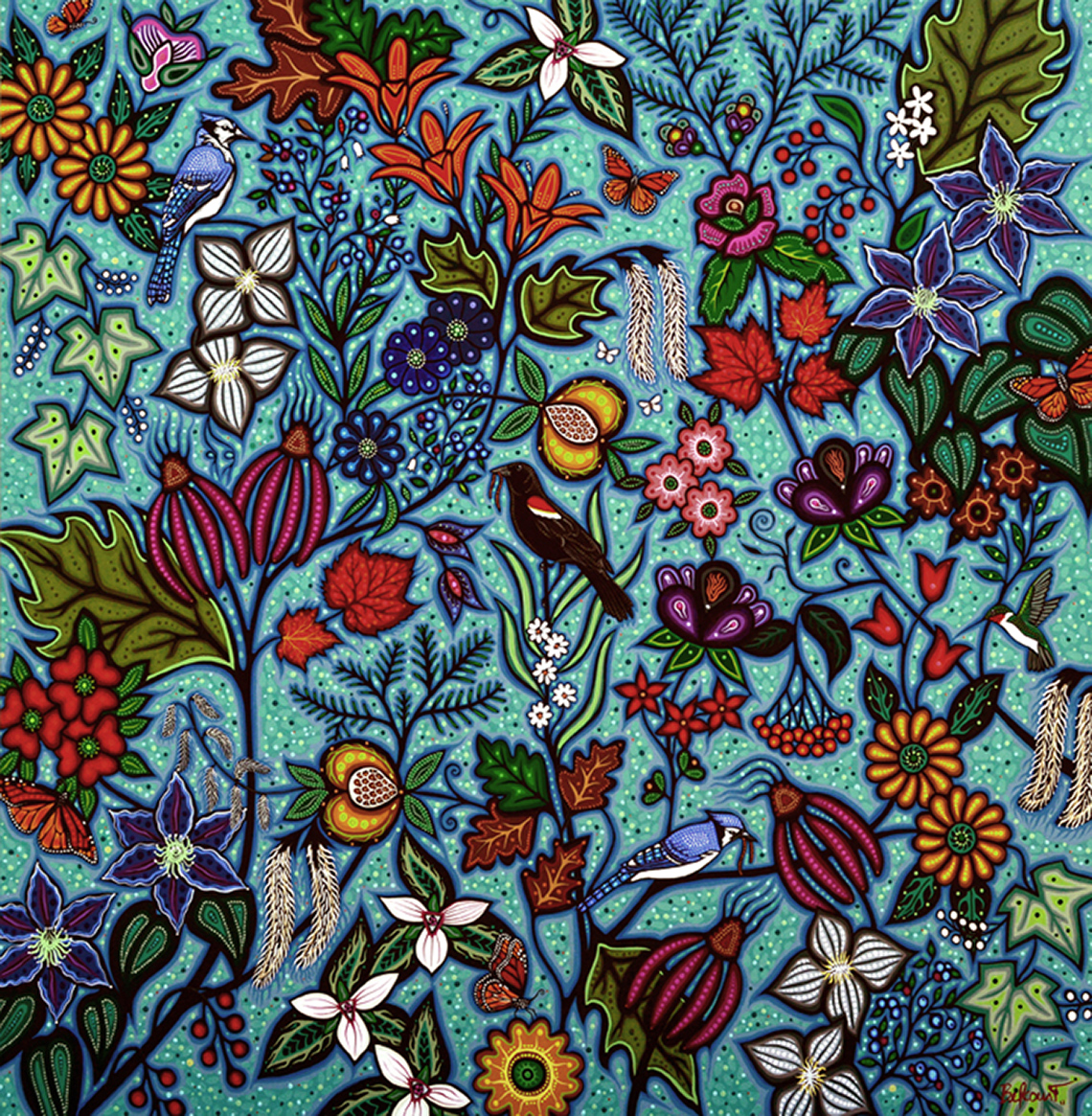
Reverence For Life painting by Christi Belcourt, 2013
This image is a painting. The painting includes many birds and plants. The plants and birds are painted in a realistic style. The objects fill up the entire painting. The artist used many vibrant colours and patterns to fill the painting.
Christi Belcourt is Métis who shares her culture and her love and respect for the earth through her work. She uses bright colours, contrasting patterns and dots in her work to represent Métis beadwork. What did she create in her painting Reverence for Life?
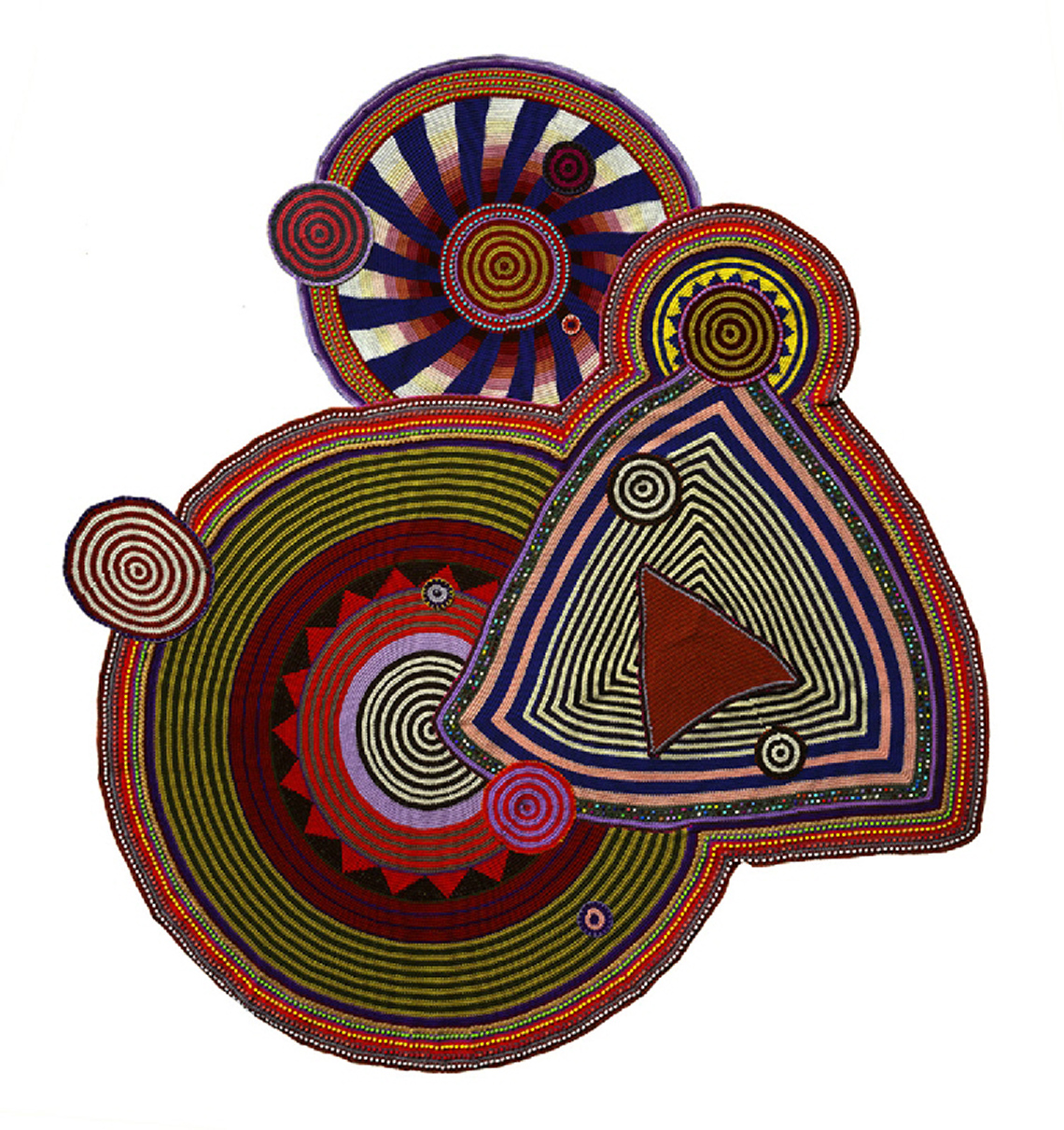
Trilogy by Xenobia Bailey, 2000
Xenobia Bailey is an African-American artist. She is a fiber artist, which means that she uses materials like fabric or yarn to create her artwork. She also uses recycled materials in her work.
In the example in her artwork ‘Trilogy’, Xenobia Bailey uses yarn and plastic beads to create shapes filled with interesting patterns. What kind of shapes do you notice in Xenobia Bailey’s artwork?
Go!
Which artwork makes you wonder?
We have explored examples of artwork made a long time ago and some that has been made recently.
Select one of the artwork examples that you enjoy.
Portfolio
Portfolio
What materials did the artist use to create their artwork?
Is the artwork from long ago or is it from a more recent time period?
Why do you enjoy this artwork?
If possible, share your thoughts with a partner. You may also create an audio recording or draw a picture.
Consolidation
Putting it all together
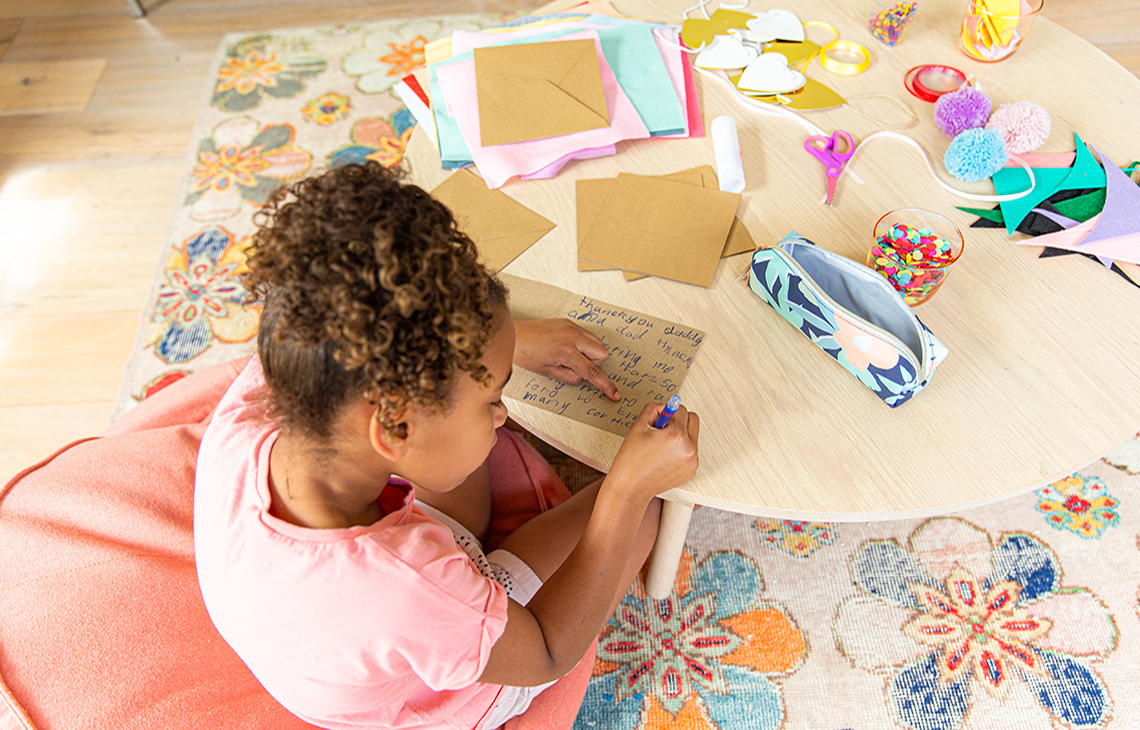
Safety
Always be sure to do your safety checks before you do an activity.
Before you begin:
We have explored how artists in the past and present create artwork using many kinds of materials.
They created their artwork to share their ideas.
How might you share your own ideas through art?
Press the following tabs to select an option.
Create an audio description of how you would make your own art.
What kind of ideas would you like to share?
What kind of materials would you use?
What are some of your own ideas? What kind of art would you like to create?
What kinds of materials might you use?

Being creative
For example, you could use crayons and paper to create a drawing.
Or paint and paper to create a painting.
You might also create a sculpture using recycled materials (i.e. cardboard boxes, bottles etc.).
Or you might use yarn and beads to create beadwork.
Student Success
Exploring digital creation options
When you are considering digital creation options, explore the variety of digital applications available!
Note to teachers: See your teacher guide for collaboration tools, ideas and suggestions.
Reflection
How do you feel about what you have learned in this activity? Which of the next four sentences best matches how you are feeling about your learning? Press the button that is beside this sentence.
I feel…
Now, record your ideas about your feelings using a voice recorder, speech-to-text, or writing tool.
